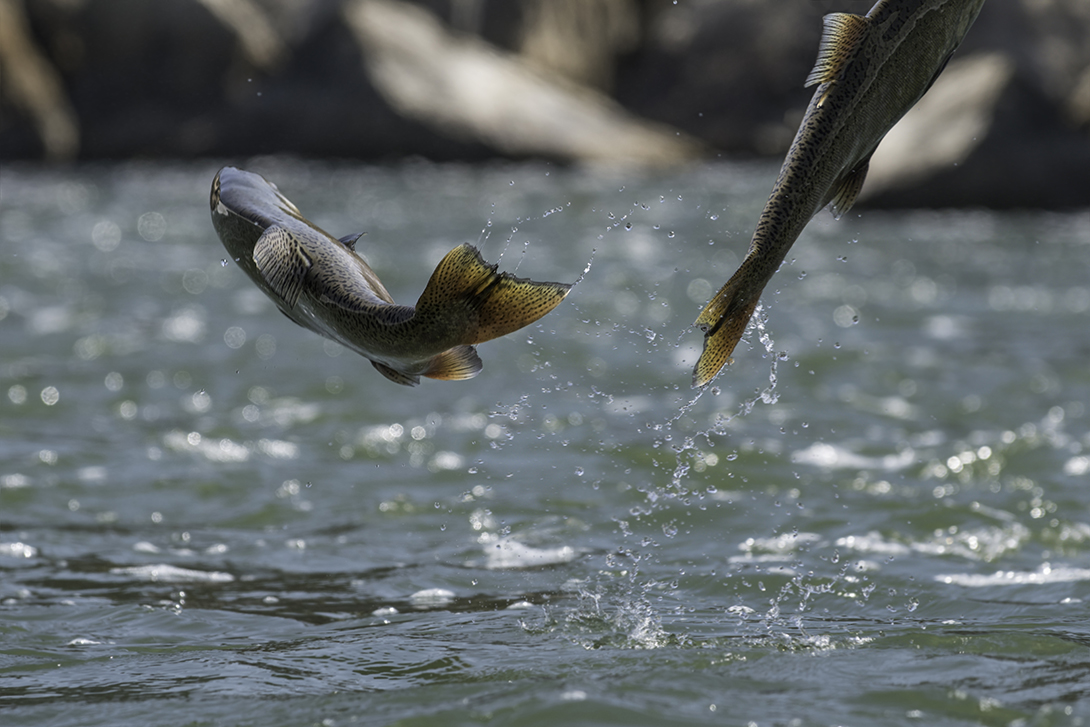
After nine years of research, the California State Water Control Board finalized a plan to save fish and wildlife populations, some of which are now threatened or endangered. For decades, native fish and wildlife co-existed with efforts to reclaim or divert water from the California Bay Delta region. These diversions led to vibrant farming and urban development throughout California. However, in more recent years, increasing diversions for urban and agricultural development led to the decline of certain species now protected under the federal and state Endangered Species Acts.
The California water plan comes at a cost to urban communities and Central Valley farmers. “Availability of water determines the farmers’ ability to borrow the money necessary to grow the crops and pay the bills. No water, no money, no crops. It’s that simple,” says Leonard Van Elderen, President and CEO of Yosemite Farm Credit.1 The San Francisco Public Utilities Commission also warned that the plan would force new water restrictions on city residents or raise customer rates in order to fund additional sources of water, like desalination.2
Proposed Objective: 40% of Unimpaired Water Flow
The state water board began evaluating the San Joaquin River flows ten years ago to avoid enforcement actions under federal and state Endangered Species Acts. They believe the measures outlined in the Proposed Amendments to the Bay-Delta Water Quality Control Plan balance environmental, urban and agricultural interests. It also provides a platform for responding to future droughts, adapting to climate change, and improving water resource management.
Seeking to protect fish and wildlife while moderating impacts on human use, the plan sets an unimpaired water flow objective at 40 percent to maintain natural tributaries of Bay-Delta area rivers from February through June. Unimpaired flow is water that naturally moves through the river system without manmade reservoirs or diversions. Based on their studies, the board chose 40% to maximize support of all water uses: agricultural, urban and environmental.
Using an adaptive framework, new flow objectives will not rigidly adhere to 40 percent. Instead they will be managed as a block of water or “water budget” between 30 to 50 percent while evaluating the impact on fish, wildlife and other beneficial uses.
Saving Endangered Fish
From 1984 to 2014, the Chinook population declined significantly. In 1984, approximately 70,000 fall-run Chinook salmon adults returned to the San Joaquin Basin. The number of returning adults dropped to 40,000 in 2010 and again to 8,000 in 2014. “While multiple factors are to blame for the decline, the magnitude of diversions out of the Sacramento, San Joaquin, and other rivers feeding into the Bay-Delta is a major factor in the ecosystem decline,” the board noted.3 Experts say several Chinook species, the only type of salmon still commercially fished and marketed in California, will be gone by the end of the century.4
Potential Economic Impact
The plan is expected to reduce the water available for human use between 7 and 23 percent, on average. During wet years, there will be almost no impact. But the board predicts significant impacts in the driest years when agricultural economic output is projected to decrease by an average of $69 million per year. This represents a 2.5 percent reduction in output from a baseline annual average of $2.6 billion.5
The board says that negative impacts could be lessened by implementing water efficiency measures, conservation, changes in crop type, or groundwater recharge projects. Consider smart irrigation technologies that can reduce irrigation and water use by up to 35%. Learn more about soil moisture sensors and weather-based smart irrigation technologies offered by HydroPoint under the Baseline and WeatherTRAK brands.
Sources:
- Modesto Bee, Grinding of water regulation is about to arrive from Manteca to Merced
- San Francisco Chronicle: SF would face new limits under state water proposal
- California water wars: Its fish vs big agriculture once again
- Many Of California’s Salmon Populations Unlikely To Survive The Century
- Summary of Proposed Amendments to the Bay-Delta Water Quality Control Plan

